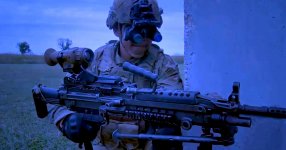Sorry guys, not to be a dick, but it’s pretty evident that little attention is being paid here to what the court was actually deciding on.
He was originally acquitted at trial court. This was a jury decision.
The crown appealed it to the Ontario Court of Appeal. That court held that the judge had fatally erred in their instruction to the jury. The SCC ruled affirming the same.
In a jury trial, it’s absolutely essential that the judge’s instructions to the jury accurately communicate all relevant points of law. In the case at bar, the judge failed to communicate the requirements of S.34(2)(c) of the Criminal Code. That is the section that requires the court to consider the person’s role in the incident. The jury, to make a legally correct and informed decision, needs to understand this point of law, but the judge failed to convey that to them
The courts have not held that Khill’s actions were inappropriate or illegal. Rather, they concluded from the evidence that a properly instructed jury could (not would) reasonably reach the conclusion that Khill’s actions contributed sufficiently to the escalation in the use of force that a self defense claim is not satisfied.
The order for a new trial is intended to rectify this, and to allow a properly instructed jury to return a verdict based on the facts but also with a full and adequate understanding of how self defense law applies.
In a jury system, ensuring proper jury instruction is an important safeguard. The judge manifestly failed on this one, and an appeal by crown was appropriate. He absolutely deserves a fair trial, but along with that the public interest demands juries be instructed properly- particularly in cases of literal life and death.
He was originally acquitted at trial court. This was a jury decision.
The crown appealed it to the Ontario Court of Appeal. That court held that the judge had fatally erred in their instruction to the jury. The SCC ruled affirming the same.
In a jury trial, it’s absolutely essential that the judge’s instructions to the jury accurately communicate all relevant points of law. In the case at bar, the judge failed to communicate the requirements of S.34(2)(c) of the Criminal Code. That is the section that requires the court to consider the person’s role in the incident. The jury, to make a legally correct and informed decision, needs to understand this point of law, but the judge failed to convey that to them
The courts have not held that Khill’s actions were inappropriate or illegal. Rather, they concluded from the evidence that a properly instructed jury could (not would) reasonably reach the conclusion that Khill’s actions contributed sufficiently to the escalation in the use of force that a self defense claim is not satisfied.
The order for a new trial is intended to rectify this, and to allow a properly instructed jury to return a verdict based on the facts but also with a full and adequate understanding of how self defense law applies.
In a jury system, ensuring proper jury instruction is an important safeguard. The judge manifestly failed on this one, and an appeal by crown was appropriate. He absolutely deserves a fair trial, but along with that the public interest demands juries be instructed properly- particularly in cases of literal life and death.




